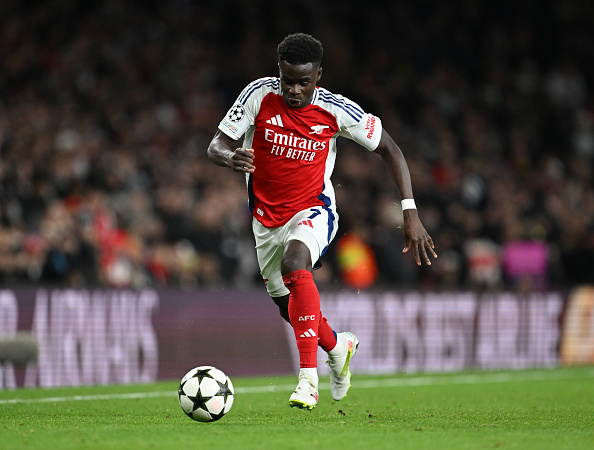Kit Shepard | June 26th, 2019
The Women’s World Cup is reaching its business end. The Netherlands’ victory over Japan yesterday confirmed the line-up for the quarter-finals, which begin tomorrow. For the eight teams remaining, only three matches stand between them and immortality.
The tournament is the biggest event in the sport, and one that needs to go right if it is to attract fans beyond the summer, when the big European leagues recommence and female soccer is not the only show in town.
There have been plenty of topics to debate and, like most events run by FIFA, many of them do not involve the soccer itself. Here are a few observations from a tournament that has been controversial, belittled, but ultimately successful.
VAR
The Video Assistant Referee system has been seldom used in women’s soccer, but was implemented in this World Cup to end the controversy of incorrect decisions from the officials. Yet much like in the men’s game, VAR has had the opposite effect, with the women in the middle at the center of debates more than ever.
Most (but not all) of the time, the system gets the call right, but the female referees are far too slow to make them. Potential penalty decisions are regularly taking close to five minutes, disrupting the flow out of a sport which is at its best when stoppages are kept to a minimum. Part of this is down to the introduction of new laws which, imposed on June 1st, less than a week before the start of the tournament, have given referees and players alike precious little time to adapt to the new regulations for handballs and penalty kicks. Nevertheless, the women in the middle appear to be lacking the conviction necessary to make decisions quickly.
Again, they are not the only ones to blame; FIFA must alter the VAR procedure to speed things up. For example, the assistants with the technology should be given the power to overturn the main referee’s penalty decision, rather than merely directing them to a screen on the side of the pitch, a practice which only sucks more life out of the game.
The flaws of the current iteration were on full display in the Group D clash between Scotland and Argentina. With Scotland 3-2 ahead and minutes away from a spot in the knockout stage, referee Hyang-Ok Ri was instructed to take a second look at a possible Scotland foul in the penalty area. After a lengthy review, she awarded a spot-kick to Argentina, but after the initial effort by Florencia Bonsegundo was saved by Lee Alexander, Ri ordered a retake when Alexander was shown to be in front of the goal-line when Bonsegundo made contact with the ball. The second attempt was converted after an arduous eight minutes, before only five minutes of stoppage time were played. The whole episode was a farce.
VAR is good for the game, if used by competent officials. The lack of practice for female referees with the system makes FIFA’s decision to debut it on under the brightest of spotlights a bizarre one. It appears that common sense is absent in the minds of the referees and, to a larger extent, those in charge of the world’s most popular sport. Regardless, although players’ anger and bemusement is understandable, this is not the way to react to a VAR call:
OFFSIDE! VAR rules out Ajara Nchout’s goal and Cameroon’s players are incredulous. #FIFAWWC pic.twitter.com/O0Flu9gApY
— FOX Soccer (@FOXSoccer) June 23, 2019
The technology is new to women’s soccer. However, respecting and accepting the referee’s decision is not. Reactions like this will do nothing to help the female game.
Lack of Parity?
After USA hammered Thailand 13-0 in the opening week, it seemed that the 24-team format (first used in the 2015 tournament) was heavily flawed, due to the gap between the elite nations and those battling to move forward.
Such criticisms have diminished since, though, as there were several close matches throughout the group stage, with one-sided results being the exception rather than the rule. Of the 36 group games, only five were decided by more than three goals, just over 10%. Aside from Thailand and Jamaica, no team has looked out of their depth, and the best way for women’s soccer to develop worldwide is to give as many nations as possible to opportunity to do battle against the best.
Reactions like that of Argentina when they gained their first ever World Cup point against Japan demonstrate what it means for the lesser teams to play with the heavyweights:
Argentina earn their first ever point at a FIFA Women’s World Cup!
The reaction after the final whistle says it all. pic.twitter.com/kMK7o0xnrP
— FOX Sports (@FOXSports) June 10, 2019
One weakness of the 24-team structure: it can encourage defensive, unattractive tactics. With the majority of third-placed sides in the six groups of four advancing to the knockout stages, three points out of nine is often enough to qualify. Draws become far more valuable, allowing teams to sit back and simply avoid defeat rather than playing attacking, entertaining soccer. Negative tactics have not been on display excessively in the tournament, but it is always a risk when over half of participating countries get out of the group stage.
The best solution? Expand the World Cup to 32 teams and replicate the format that the men use; eight groups of four. With only the top two going through from each group, even the minnows would have greater incentive to win games, rather than playing for a stalemate. Increasing the number of participants would also allow further global growth.
Who’s Going to Win it?
The actual final remains well over a week away, but the de facto final might be on Friday. Holders USA and hosts France were the two favorites heading into the tournament, and they will meet in the second quarter-final in a match that could decide the destiny of the trophy.
Both teams won all their matches in their respective groups but were pushed in the round of 16; France needed extra-time to get past Brazil while USA squeezed past Spain courtesy of another late, questionable, VAR-assisted penalty decision. Nevertheless, they remain the teams to beat, but only one will make it to the tournament’s final week.
Elsewhere, England and Germany, widely considered to occupy the tier below the French and Americans, have also won all their matches and will expect to make the semi-finals. One would expect the European champions Netherlands to complete the last four, since they are facing Italy, a nation that has already surpassed expectations by reaching this stage.
The weather forecast is worth mentioning, as France is in the midst of an intense heat wave. Temperatures will be around 85 degrees Fahrenheit (roughly 30 degrees Celsius) for all the quarter-finals, likely forcing the teams to keep the conditions in mind when planning their strategy. Of course, the players are phenomenal athletes capable of coping with the heat, but this week is not the time to play a fast, high-pressing style.
The smart money is on the winner of the France-USA encounter, whoever survives will be the unequivocal favorites and have momentum that will take some stopping. That being said, England, Germany and the Netherlands are all very capable of springing a surprise and, with the pressure of knockout soccer, anything can happen.
It has Been Enjoyable
Women’s soccer is forever compared to its male equivalent and is often considered inferior due to the lack of coverage, international superstars and fan interest. Yet this summer’s World Cup has only accelerated its rise in stature and credibility. It would be naïve to argue that the overall quality can match the men’s, but there has been more than enough talent on display for the tournament to be thoroughly entertaining to date.
The bizarre climax of Scotland vs Argentina. Chile failing to qualify for the last 16 by inches. The Netherlands’ late winner against 2015 runners-up Japan. These matches all provided superb drama. They also all involved the controversial VAR, but while the system needs plenty of polishing, it does provide the women’s game with major talking points which, for a sport always demanding more recognition and airtime, cannot be solely a bad thing.
The sport is poised to gain more exposure in the coming years, with the likes of Marta, Alex Morgan, Wendie Renard and Vivianne Miedema (among others) possessing the star power to break free from the shadows of the men’s game.
For all the criticisms, the tournament has been a fruitful one. Here’s hoping the final games provide plenty of memorable moments, keep intervention from VAR to a minimum, and continue to show that women’s soccer deserves sports fans’ respect.
Questions and comments?
thescorecrowsports@gmail.com
Follow Us on Twitter @thescorecrow
Follow Us on Reddit at u/TheScorecrow
Follow Kit Shepard on Twitter @KitShepard
Main Credit Image:
[getty src=”1158356777″ width=”594″ height=”396″ tld=”co.uk”]






